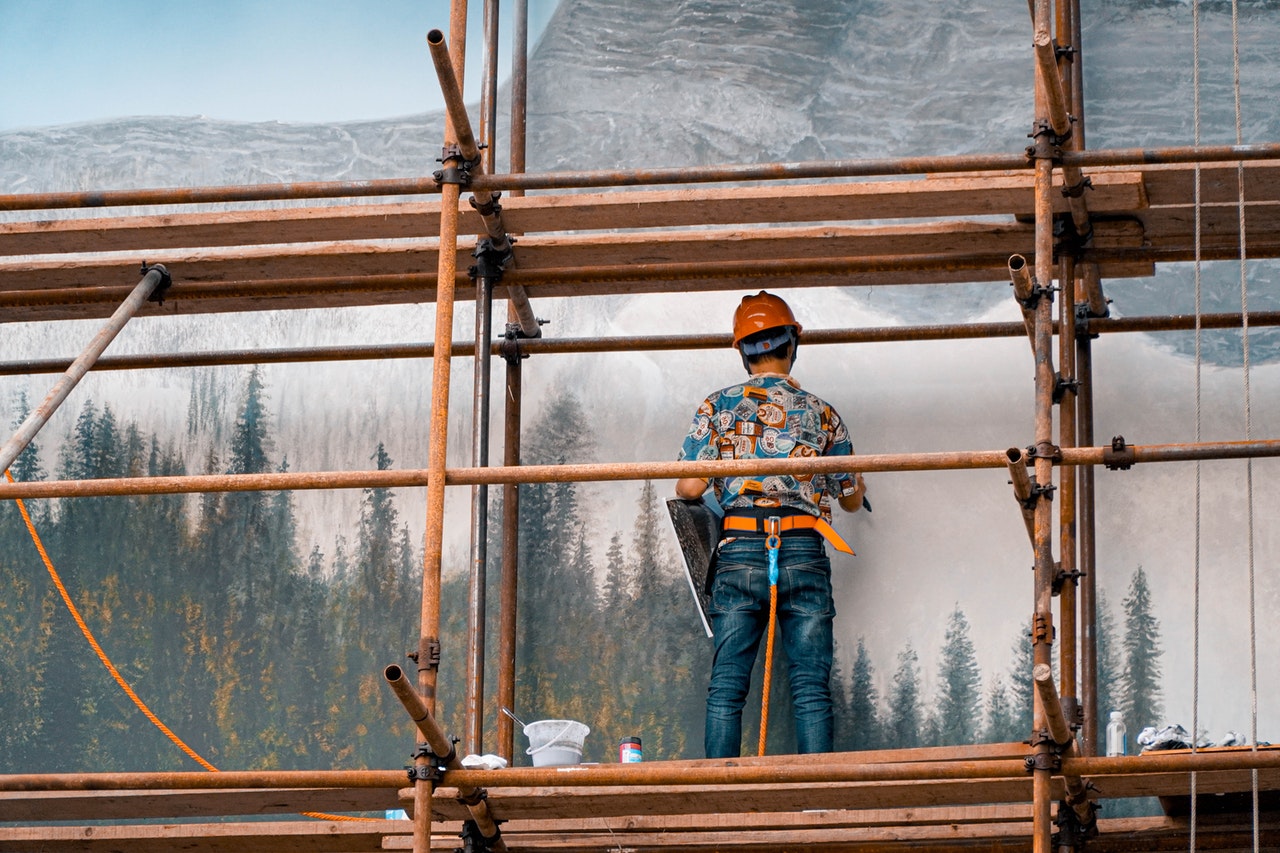
Scaffolds—Structural components Explain dangers If the structural components of a scaffold are damaged, defective, or installed incorrectly, it can lead to a tip-over or collapse. Identify controls Structural components of all frame scaffolds must be inspected regularly. Inspection should include frames, feet, connecting pins, braces, and guardrails. FRAMES • Uprights and cross-members should not be […]

Scaffolds—Planks and decks Explain dangers Many scaffold injuries involve problems with planks. If scaffold planks and decks fail, you could be seriously injured or killed from a fall. You could also be thrown off balance and injure yourself with your tools or equipment. If scaffold planks are uncleated or unsecured, they can easily slide off. […]

3-point contact — Ladders Explain dangers Climbing a ladder is not as easy as it sounds. Workers have died from falls after losing their balance. Most ladder injuries occur when getting on or off a ladder. Identify controls • To use ladders safely, always maintain three points of contact. That means two hands and one […]

Stepladders Explain dangers A stepladder is one of the most familiar things on a jobsite. Still, workers get hurt using them. Falls are the biggest risk. Even though workers are not very high off the ground, some have died from falling a short distance and landing the wrong way. Even a sprain or strain could […]

Extension ladders Explain dangers Extension ladders can be dangerous tools. Workers have been killed and injured from falls and powerline contact. Identify controls • Choose the right ladder for the job. On a construction project, it must meet the requirements of a Grade 1, Grade 1A, orGrade 1AA ladder under CSA Z11-12: Portable Ladders. Also, […]

Working at heights—Site-specific training Explain dangers Falling from heights continues to be a leading cause of injuries and fatalities in the construction industry. Despite the introduction of standardized working at heights (WAH) training, too many workers are dying from fall-related injuries. The WAH training standard recognizes that classroom-based WAH training is only the first step. […]

Fall protection—Rope grabs Explain dangers With rope grabs, there are three basic hazards: 1. Attaching them the wrong way 2. Grabbing hold of them during a fall 3. Using them with the wrong size or type of rope. A rope grab attached upside down to a lifeline can’t work properly. Instead of locking on the […]

Fall protection—Approvals and inspections Explain dangers When you’re using a travel restraint or fall arrest system, your life depends on your equipment. If it is not certified by a recognized authority or is not properly inspected and maintained, you risk injury and death. Identify controls APPROVALS Safety harnesses must be approved by the Canadian Standards […]

Fall protection—Basic types Explain dangers Falls are the number-one cause of accidental deaths and critical injuries in construction. And you don’t have to fall far to be injured or killed. Identify controls On many sites, guardrails are the most common and convenient means of fall protection. Where guardrails cannot be used, workers must use another […]

Guardrails Explain dangers Falls are the number one cause of critical injuries and deaths of Ontario workers on construction sites. All workers must be protected from a fall hazard. Identify controls Guardrails are often the best and most convenient means of fall protection. Where possible, guardrails must be installed • Along the open edges of […]
